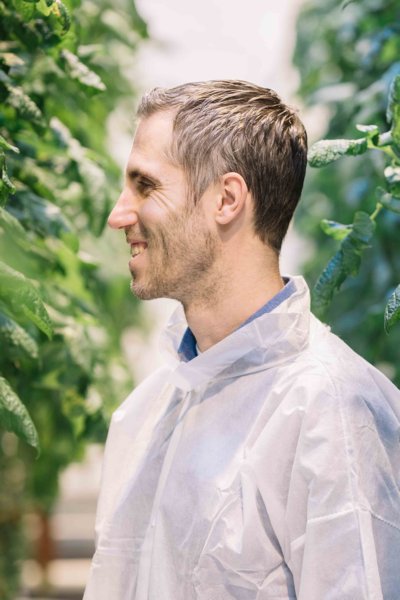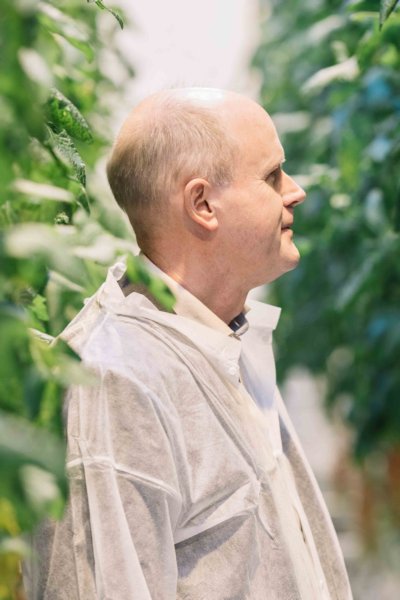Text: Nienke Beintema | Photography: Dieuwertje Bravenboer
Smart agriculture: Listening to the needs of plants
Agriculture and horticulture are not always efficient. Often times, small adjustments may lead to big improvements in yield and sustainability.
But which adjustments are those? Under the umbrella of the 4TU Plantenna programme, researchers are developing techniques to extract information from plants about what they need. ‘If you wait until their needs shows on the outside, you're actually too late.’
Feeding the world’s growing population is one of the major challenges of this century. From 2 billion in 1930, global population has grown exponentially to 6 billion in 2000 and nearly 8 billion today - and the end is not yet in sight. The models differ in their projections, but they all predict a peak of at least 9 billion people. How do you feed all those mouths, if this is already a problem in many parts of the world today?
The earth can in fact feed all those mouths, experts say, if we make a shift to more efficient agriculture, more plant-based diets, less food waste and a fairer distribution of resources. Scientists all over the world are working together on the first aspect: more efficient agriculture. Sustainability is a key word here, because long-term success can only be achieved if ‘greater efficiency’ is does not come at the expense of nature, environment, people and landscape.
A wide range of scientists and companies are working together on sustainable agriculture within the 4TU Plantenna programme (see text box). Their focus lies on obtaining information directly from plants: what is the state of the plant? How does it respond to changes in the environment, and what does it need? Growers can use this information to optimise plant growth, with minimal use of resources and energy.
Still others look at the health of fruit with radio frequencies. Within the FruitFrost project, we are developing a system to keep the temperature of fruit above zero by means of smart sensors and wind turbines that can distribute warm air through an orchard. And there are electrical engineers who focus on developing cheaper sensors, so that these techniques are also accessible to people in poorer countries.’
Why are these developments important?
Jan: ‘There is a great deal of tension: all over the world, farmers have to produce more and more efficiently to keep their heads above water. At the same time, it is clear that we need to take better care of our planet. The regulations are becoming stricter, but consumers want change as well. The use of water, energy and pesticides must be reduced. A farmer in Mexico needs 100 to 300 liters of water to produce one kilogramme of tomatoes. In our advanced Dutch greenhouses we use only 4 liters per kilogramme. We can export this expertise to Mexico. There a farmer can easily double his yield, with a lower input.’
Gerard: ‘Fortunately, these developments are already underway. But there is much more to it than just technology. You also need the right people. People who know how to manage a greenhouse smoothly. That is often the main challenge today.’
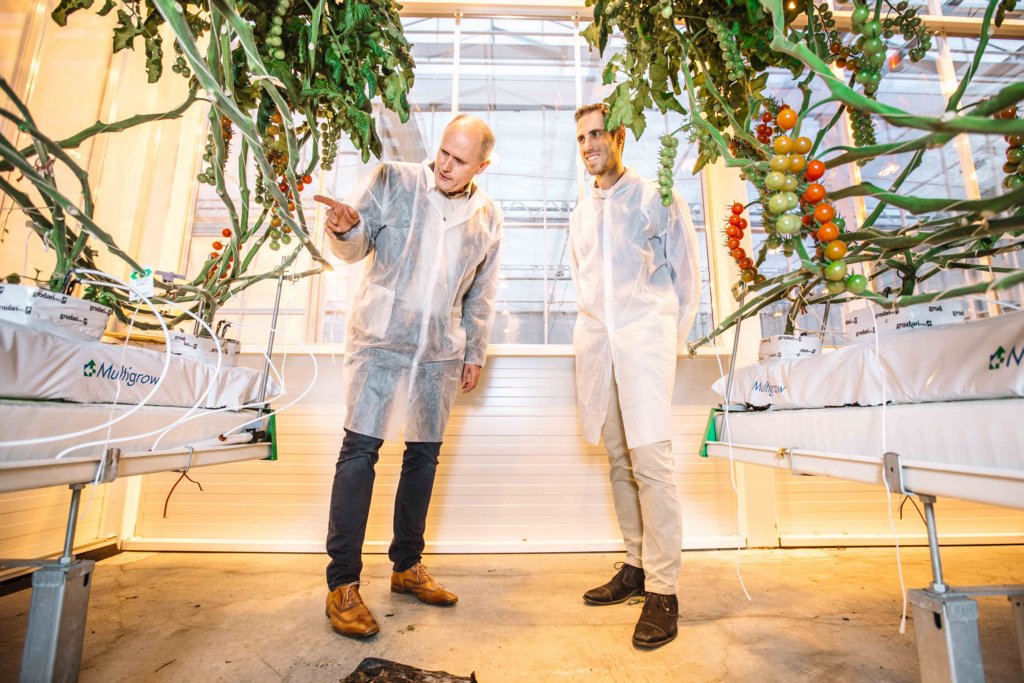
Jan: ‘Young people are not easily interested in studies in these areas. Horticulture still – wrongly – has the image of heavy, dirty work in greenhouses. But that is no longer the reality. All kinds of innovations have taken place, making the work quite high-tech. But of course people need to be adequately trained for this. We can build greenhouses faster than we can train people. Automation is also a challenge: you need good people for that too.’
Can Plantenna play a role in this?
Gerard: ‘A core task of 4TU is preparing young people for important developments in society. Within Plantenna we already see nice examples of master students who are interested in continuing in this line of work.’
Jan: ‘We also try to get as many interns and graduate students as possible. A beautiful location such as this World Horti Center can also be helpful. This center houses a permanent exhibition on the latest technical developments, where we receive 25,000 visitors a year from all over the world. A horticultural school is under the same roof. It is important that we show the younger generation that horticulture can be exciting and high-tech.’
Is high-tech really the solution for developing countries?
Jan: ‘Yes, certainly in the long run. You have to realise that many of these things are still in the development phase. Within Plantenna, but also elsewhere, people conduct fundamental research into the functioning of plants and develop techniques to measure and optimise cultivation. This research is best done in greenhouses.’
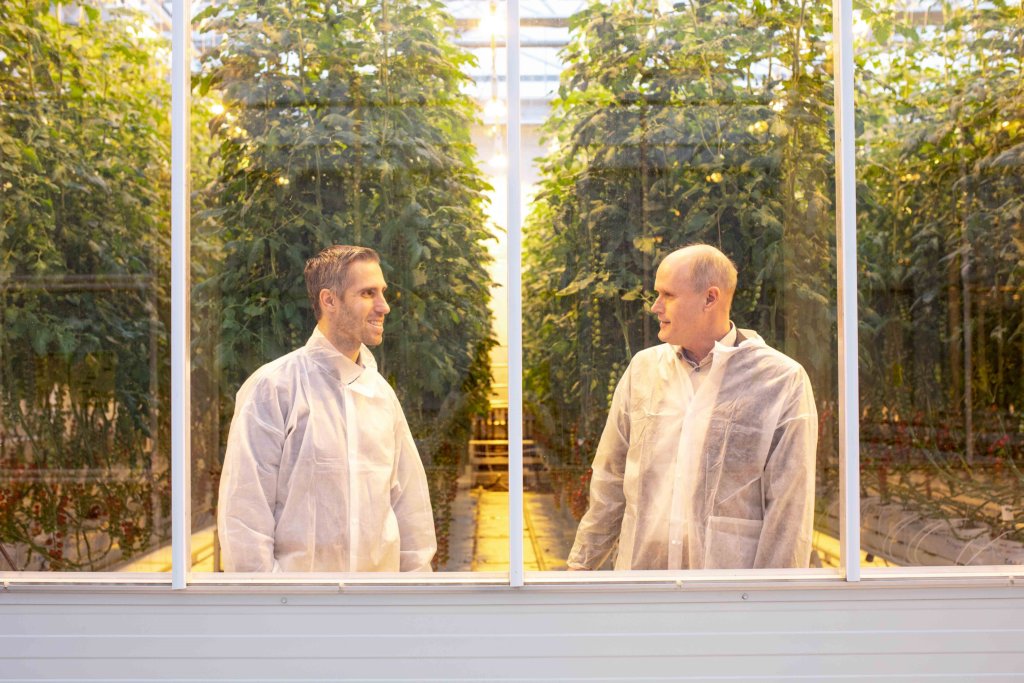
Gerard: ‘But with the knowledge that this generates, the business community can develop products and techniques that are much more widely applicable. Also in South America, Africa and Asia.’
Jan: ‘The world will follow. Those techniques will end up everywhere.’
Gerard: ‘The idea behind Plantenna is that we develop cheap sensors with robust electronics. And we are working on wireless communication, with which farmers receive information about the condition of their crops on their mobile phones. The next step is: what can farmers do with that information? We’re also working on ways to convert all those data into practical advice for the end users.’
Is it realistic that farmers in Africa will work in this way anytime soon?
Gerard: ‘I think so. It’s definitely possible.’
Jan: ‘We already have examples of high-tech data that help farmers, also in developing countries. Not necessarily with sensors, of course. Farmers are already following advice based on the analysis of satellite images, for example. In Europe, this development has gone very fast. If you’d predicted this 50 years ago… So I don't see any reason why that shouldn't be true for this as well.’
So in 50 years, farmers worldwide will be working with these kinds of techniques?
Jan, laughing: ‘In our field, 5 or 10 years is already a distant horizon. So I find that very difficult to say. Besides, there are bottlenecks in areas that have nothing to do with technology, but rather with local government, or with politics. In Russia, for instance, we were unable to use certain radio frequencies because the army was using them already. Those kind of things. But other than that, it's just a matter of investing a lot of money.’
Gerard: ‘I absolutely think that we’ll see some of Plantenna’s techniques in practice within the next 10 years.’
Jan: ‘Developments are going very fast, especially in greenhouse horticulture. The Netherlands is at the forefront of this. People from all over the world come here to see how we do this. But we do have to stay sharp, and keep developing. Before you know it, you’re the Kodak or Nokia of horticulture.’
Gerard: ‘And we shouldn't just focus on technology. The local management of greenhouses, for example, is also a bottleneck. You can invest tens of thousands of dollars in beautiful sensors, but will it fit into people’s systems?’
That sounds very complicated… how do you roll out new techniques, for example in Africa?
Jan: ‘You have to start small, and advance gradually. You start with simple sensors in the soil, depending on where you are. Each region has its own challenges: temperature, moisture, nutrients, plant diseases… This calls for a focus on training. We train local people who can then train others. Our aim is to create a strong local base. We don’t say: look at what fun toys we have developed. Priva has set up a training center in Guatemala, for instance. We show "the latest and the greatest", but also all the steps involved. We are setting up five more training centers. Sometimes training actually starts with people learning how to read and write.’
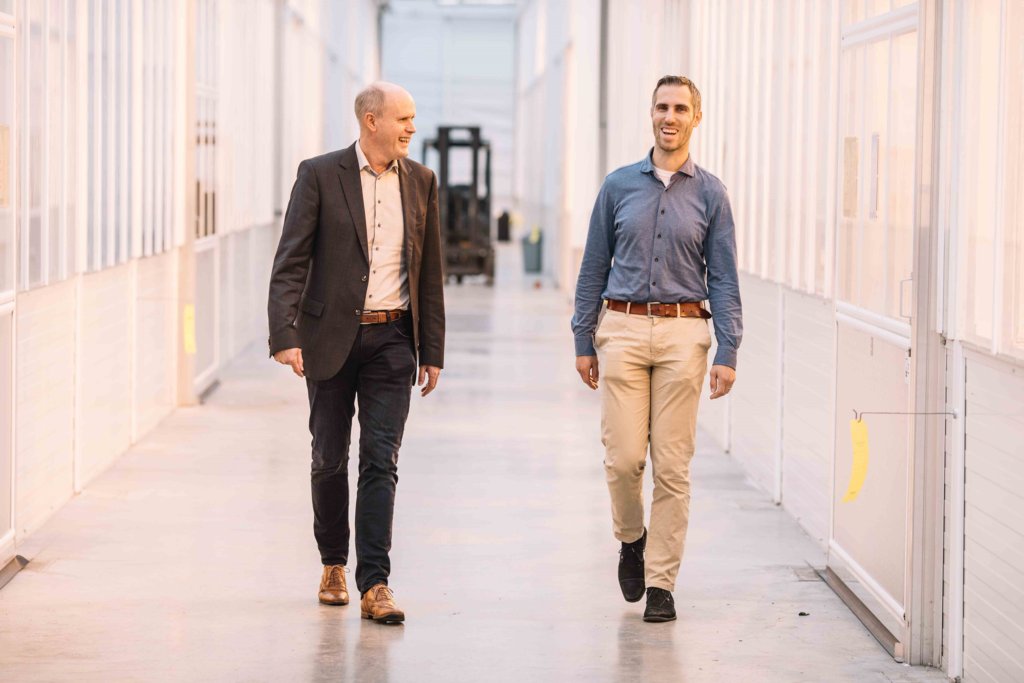
What is Priva’s revenue model then?
Jan: ‘It starts from a social commitment. We really want to contribute to a better world. We do a lot of projects that don't pay off financially at all. But of course it’s not just charity. Ultimately you see that as people develop, their agriculture rises to a higher level. And yes, then they’ll start to buy our stuff.’
Gerard: ‘At Plantenna, this social drive mainly focuses on the Netherlands. There is a lot of pressure from the government, and also from consumers, to make our agriculture more sustainable. Take the nitrogen discussion, for example. 4TU sees a clear role for itself in this. The four technical universities are keen on working together on sustainability, in common projects. We use each other's expertise to come up with new solutions. In Delft we know a lot about physics, but for knowledge about plant physiology we turn to Wageningen, and for the latest wireless communication and electronics to Eindhoven or Twente.’
What’s the next step for Plantenna?
Gerard: ‘Firstly, we are moving from lab to practice. Secondly, our focus is shifting towards sensors that are connected to each other via a wireless network. We are investigating the use of radio waves for transmitting the sensor data. To send radio waves efficiently, you need an antenna. In a sub-project we’re looking at whether we can use the plant itself as an antenna. Hence the name of the programme. It looks promising. I can’t say when this will useful in practice, but it’s certainly a lot of fun.’
Jan: ‘It happens a lot that applications only come into play later. Scientific research is not always applicable right away, but eventually it always is. I have no doubt that.'




